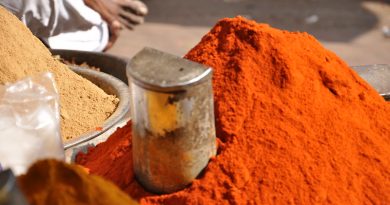Marmot from Mongolia
Food Facts
Where: Mongolia, Northeast Asia
Top Dish: Bodok – stuffed and roasted marmot
Taste: Beefy
Other Uses: Warm fur clothing to protect from the harsh Siberian winters
Marmots are rather large rodents which are found in the Northern Hemisphere. In North America they are called ‘groundhogs’ and they even have their own holiday, when this little feller has the onerous responsibility of telling the nation whether spring is on its way.
Far away in Mongolia the very same animal is prized not for it’s weather forecasting abilities but for it’s tasty meat and valuable fur.
Origins and History
The marmot has been a vital source of food and clothing for Mongolians since ancient times. When the Venetian explorer Marco Polo ‘discovered’ Mongolia in the 13th century he reported that the people ate ‘Pharaoh’s rats, of which there are great numbers in burrows on those plains’.
In the late 19th century the Germans realised that if they dyed Marmot skin black they could pass it off as otter, a much more valuable commodity. Soon there was a flourishing trade in marmot skin and even today it an important source of income for the nation. More recently, it has also often been used as a cheaper alternative to mink, being similar in appearance when dyed.
Hunting for Marmut
Marmots are carriers of bubonic plague in Mongolia but this doesn’t deter the people from hunting them for food. In fact, their traditional hunting methods, bizarre though they may seem, protect against the killing and consumption of infected animals: a Mongolian marmot hunter dresses all in white, with a white hat with long rabbit-like ears and a daluur – a tassel made from a horse or yak’s tail. When the daluur is shaken the marmot begins to call, but doesn’t run and hide. The hunter moves slowly towards his prey, waggling the long ears if the marmot stops calling. The whole parade allows the hunter to come much closer to the marmot that he would otherwise be able to. The hunter will never shoot a marmot that doesn’t give the alarm call, as this natural response is not given by creatures infected with the plague. Moreover he’ll never eat an animal that he’s found already dead or could catch and kill with his bare hands.
At the beginning of the 20th century, the Chinese tried to cash in on the marmot fur boom and began hunting them themselves. They didn’t observe the Mongolian procedure however, with the result that thousands of poor Chinese died in the ensuing outbreak of plague.
Serving Suggestion
Once you’ve caught you’re marmot and you’re sure its safe to eat, you can prepare it in the open air in much the same way as the Mongolians have done since ancient times:
The head and insides are removed, then the meat is stuffed back inside along with red-hot stones. It is sealed up again and left to cook from the inside out for two hours. This dish is known as Bodok.
Shopping
Although not necessarily that ethical, marmot goods like fur coats and hats make genuine authentic gifts from Mongolia. The travel friendly cities of Ulaan Bataar and Dalanzadgad are good places to buy.
More Information
International Marmot Network
Website of the International Marmot Network, containing a wealth of facts and info about these creatures from all around the world.
Marmot Burrow
Internet resource for marmots, marmoteers and marmotophiles
By Jess Halliday




